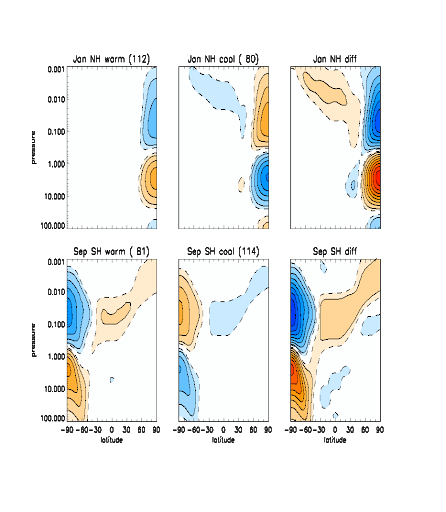Interhemispheric Coupling
Observations and numerical model studies over several decades show a correlation between temperature in the winter stratosphere and that at the summer upper mesosphere. The mechanism that had been proposed by earlier investigators involved an interplay of gravity waves with changes in wind gradients. To explore this process more thoroughly, we investigated it using monthly and daily dynamical output from several long integrations using CESM2 (WACCM). The figure shows an example for September. Here, the temperature at each location is averaged over all months for which the southern hemisphere stratosphere was warmer than average and then the average temperature is subtracted. A weak but significant region warm temperature extends across the equator to the north pole.
Statistical analysis shows that perturbations caused by planetary waves in the winter stratosphere led to a global circulation that occurred within 0-3 days. The response is identified as a multi-cell circulation extending across the equator from the winter to the summer hemisphere and through a broad vertical domain encompassing the entire stratosphere and mesosphere. Gravity waves in the equatorial region and summer hemisphere do not make an appreciable contribution to the interhemispheric coupling.
